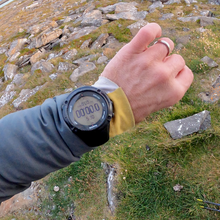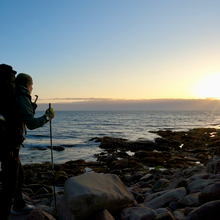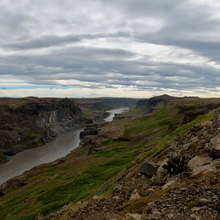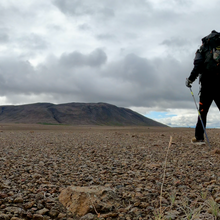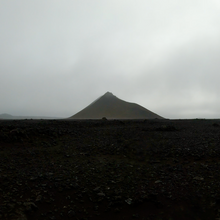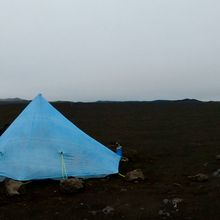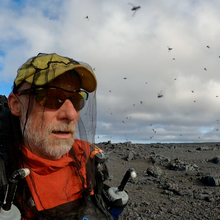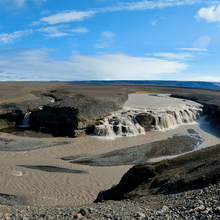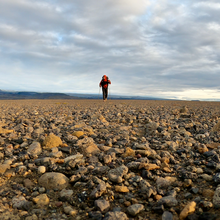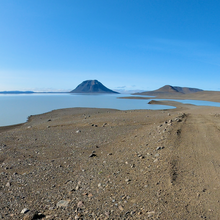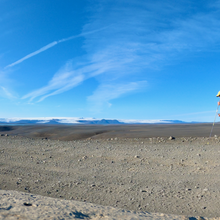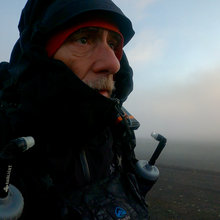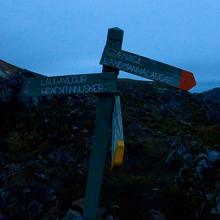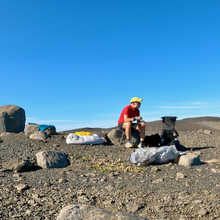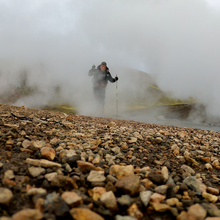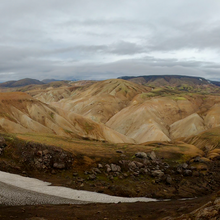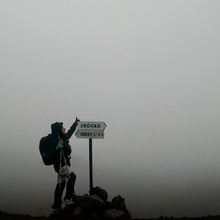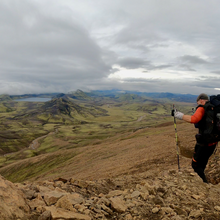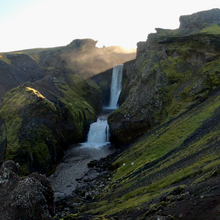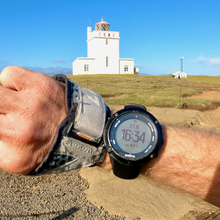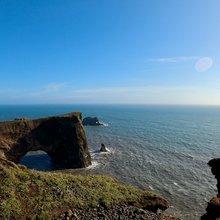Summary
On Aug 27, 2023, I was able to wrap up a new unsupported Fastest Known Time (FKT) on the north-south traverse of Iceland in 8 days, 11 hours, and 4 minutes. That’s 4 days, 15 hours, 41 minutes faster than Eli Burakian’s 2022 unsupported FKT and 21 hours, 14 minutes slower than Meredith Quinlan and Jess Baker’s 2018 self-supported FKT. I had good and bad times.
The route
The north-south Iceland traverse FKT route was introduced and first completed self-supported in 2018 by Meredith Quinlan and Jess Baker. The route starts at the Hraunhafnartangi lighthouse, the northernmost lighthouse, and ends at the Dyrhólaey lighthouse, the southernmost lighthouse. The Hraunhafnartangi lighthouse is located only about 800 meters south of the Arctic Circle. The route includes the famous Laugavegur trail between Landmannalaugar and Þórsmörk. National Geographic listed the trail as one of the most beautiful trails in the world.
I followed the standard Quinlan & Baker route for the most part, with small deviations due to conditions, closures, or new trails.
Some sort of half-baked report
I find it rather impossible to put this experience into words. I think the movie will do a better job at showing the amazing landscapes. See https://www.christofteuscher.com/aagaa/report-unsupported-iceland-traverse-fkt for more photos instead of words.
My spreadsheets predicted that I might be able to get this route done in 10 days. So I packed food for 10 days and I figured I could stretch it for another day or so in the worst case. I was glad I didn’t have to.
I wanted to start around sunrise from the Hraunhafnartangi lighthouse. You can’t drive to the lighthouse itself. It took me 30min to hike there from the road. I started the watch at 5:30am on Aug 19, 2023. The sun was just about to rise. I then walked a little further north of the lighthouse to reach the beach. I felt very nervous and uncertain about this adventure, but at this point, I could not quit anymore. My ride had already left.
I did what usually works best in such situations: you start to move and try to get into the zone. The weather was fine (for now), although it was rather chilly and windy. At the very last minute, I exchanged my ultralight Gore-Tex jacket for a more solid version. I did not regret that decision. In fact, it was almost a lifesaving decision.
Needless to say that my pack felt terribly heavy. There was no way I could run with that sort of pack. Perhaps toward the end of the journey, when there would be very little food left.
The first few days were really hard on my shoulders and feet because of the pack weight and the road sections. Yet, I was generally able to crank out a few miles beyond my daily goals. That felt good and was motivating.
In true unsupported style, I carried all of my food and supplies from the beginning to the end and only filled up on water along the way. Whenever regulations required it, e.g., in National Parks or Nature Reserves, I slept in designated campsites.
On day 4 my pants started to fall down. Clearly, I was not consuming enough calories. But alas, I could not buy anything in addition and just had to live with what I had packed. Unsupported adventures are really unforgiving in many ways.
Like Eli, I had days of torrential downpours and days of relentless sun and heat. I was glad I packed both a more robust Gore-Tex jacket and shorts at the very last minute. Conditions can change very quickly and dramatically. I stopped counting how many times I took my pack off to add or remove layers. The saying that “If you don’t like the weather in Iceland, wait five minutes” does seem to have some truth.
As the days went on, I was able to get more and more ahead of my “realistic” pace plan. That has rarely happened.
Weather and conditions kept changing rather dramatically. One some days I really struggled with the heat, which seems rather absurd for late August in Iceland. On other days I was unable to stay dry and struggled with hypothermia. Whenever I could, I dried my gear and made sure everything was ready for another wet spell.
I feel I struggled the most with the paved road sections. Not so much because of the pavement, but more because of the drivers. Very few drivers seemed polite and left space. Many cars simply didn’t move over at all, so I had to constantly step off the mostly non-existing shoulder. Once I almost got hit by a reckless driver who passed a car and didn’t seem to have seen me.
The worst road section was most definitely the last 17 miles (12 miles on the ring road) to the southernmost lighthouse. I assume the traffic was worse because it was Sunday afternoon.
By then I was more than a day ahead of my planned schedule. I was incredibly relieved to be done slightly earlier as the weather was also supposed to turn sour again. The last two days were definitely the most challenging, mostly because of the rain, wind, fog, and terrain.
Anyway, I’m not really sure what else to add except that it was another one of these adventures that required a wide variety of physical, mental, and other skills. Thankfully, things somehow aligned. According to a ranger, I lucked out with weather. I guess it can always be worse.
Oh, and yes, there is definitely room to do this faster.
More pics at https://www.christofteuscher.com/aagaa/report-unsupported-iceland-traverse-fkt


